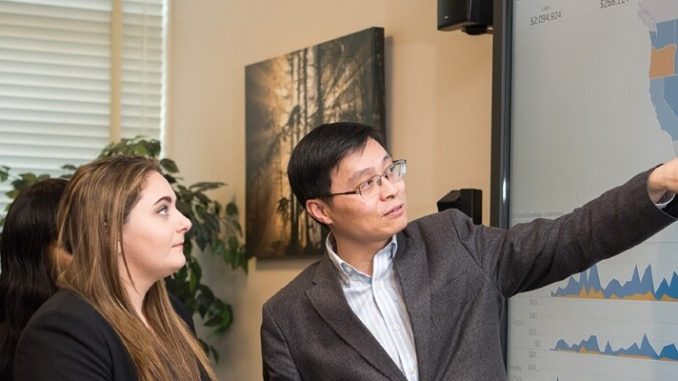
On Oct. 9 at 12:30 p.m. in room 100 of the Lecture Center, SUNY New Paltz President Darrell P. Wheeler held a kickoff event for the Strategic Planning Initiative, inviting the campus community to learn about the university’s involvement in developing a strategic plan for the next three years.
Strategic planning, broadly speaking, involves several phases. In order, this includes evaluating the goals of an organization, creating strategies to meet them, implementation, then evaluating the results and making necessary revisions and future recommendations. For SUNY New Paltz, strategic planning is designed to specifically identify institutional goals and utilize campus resources to elicit change.
“Everything is about how we do this together, the strategic plan. The implementation cannot be done in isolation. It’s built on partnerships,” said Wheeler, who opened the afternoon with a brief introduction to the topic. He then introduced Dan Silverburg, the strategic planning senior optimization expert of CampusWorks.
To begin the process of drafting up a new strategic plan, the university is working with CampusWorks, an organization that partners with higher-education institutions to “develop and implement insightful strategies that improve institutional effectiveness and enhance the student experience.” They offer a variety of services including managed services, optimization solutions, enterprise solutions and technology management. Specific to their strategic planning service, CampusWorks has partnered with institutions like Arizona Western College, SUNY Jefferson Community College and Buena Vista University, with a focus on inclusivity of all campus parties in creating the plan.
CampusWorks was selected out of 10 total vendors earlier this year, with Executive Director of Communication and University Spokesperson Andrew Bruso stating that their “ability to engage with our community and [CampusWorks’] thoughtful approach to interviews helped them stand out.” This partnership was coordinated following all New York State procurement rules with the intention of establishing a long-term, sustainable partnership.
Silverburg laid out the plan over the next few months, using the metaphor of a waterfall to demonstrate the fluidity of the plan they wish to create. “It’s necessary for us all collectively together to build context from what’s happened in the past, what’s happening currently and what the leading indicators are for the future, to build a strategic plan that isn’t that future forward,” he said. “We have to take all of that approach forward, so that you can understand where you want the institution to go.”
The project timeline spans the academic year, collecting survey data from students, hosting planning workshops and developing goals to generate the final strategic plan by May 2025. Silverburg assured this plan will be agile and flexible to the changing needs of the institution.
The last time strategic planning had been implemented was in 2018, as part of the five-year plan under former President Donald P. Christian. It was primarily run by the Strategic Planning Council, later rebranded as the Strategic Planning and Assessment Council in 2017, and the plan identified seven Strategic Plan Essential Initiatives. In the 38-page report, some highlights included the overhaul of the general education program, the renaming of the Peregrine Complex (formerly the Hasbrouck Complex) and the integration of the Global Goals of Sustainable Development. The plan’s goals were re-used beyond 2018, adjusted during the COVID-19 pandemic to meet the demands of students and faculty, then eventually ended with Christian’s retirement.
Now, Wheeler seeks to start the process again, calling on everyone’s involvement in the process. “The idea here is that for every one of us who puts our fingerprint on this strategic plan, it will support this institution being vibrant.”
One group of particular note is the student body and their overall involvement and contributions to strategic planning. Bruso stated that the Office of Communication and Marketing intend on utilizing multiple communication avenues, including “email, text messages, physical and digital signage around campus, Brightspace announcements, and social media posts,” to ensure that students remain informed about the available opportunities. This will come in the form of focus groups, workshops and surveys that students can participate in to ensure that top concerns and vision for the campus are heard.
“The student voice is critical in shaping the future of SUNY New Paltz. This year’s strategic planning process isn’t just about administrative priorities — it’s about creating a university experience that directly aligns with what students need to thrive,” said Bruso. Even though current students who participate may not directly benefit from the initiatives put in place, their contributions will have a major impact on the experiences of future incoming classes in the next few years.
Speaking directly to the students in attendance at the kickoff meeting, Wheeler stated, “This plan is really about the future of the institution from the perspective of our most valued citizens, because the institution really exists to make sure that students have access to the highest quality education.”
